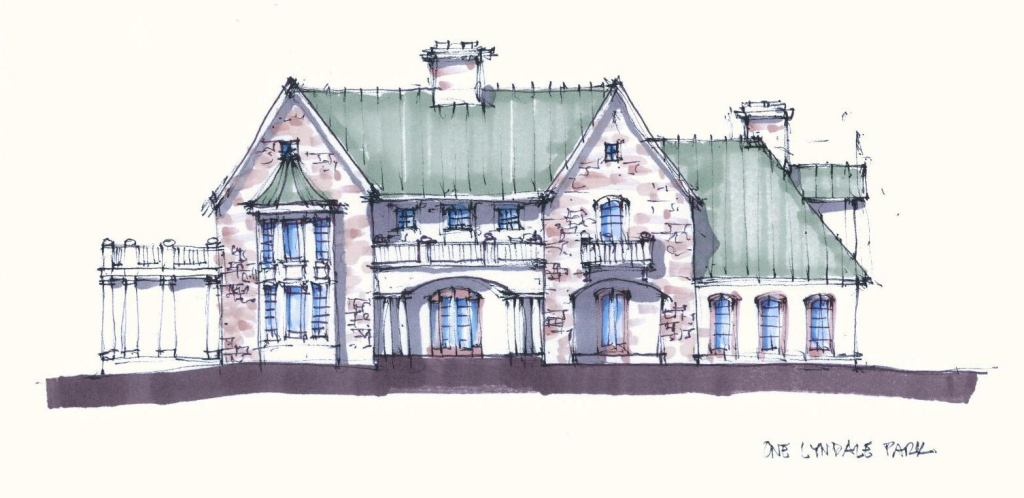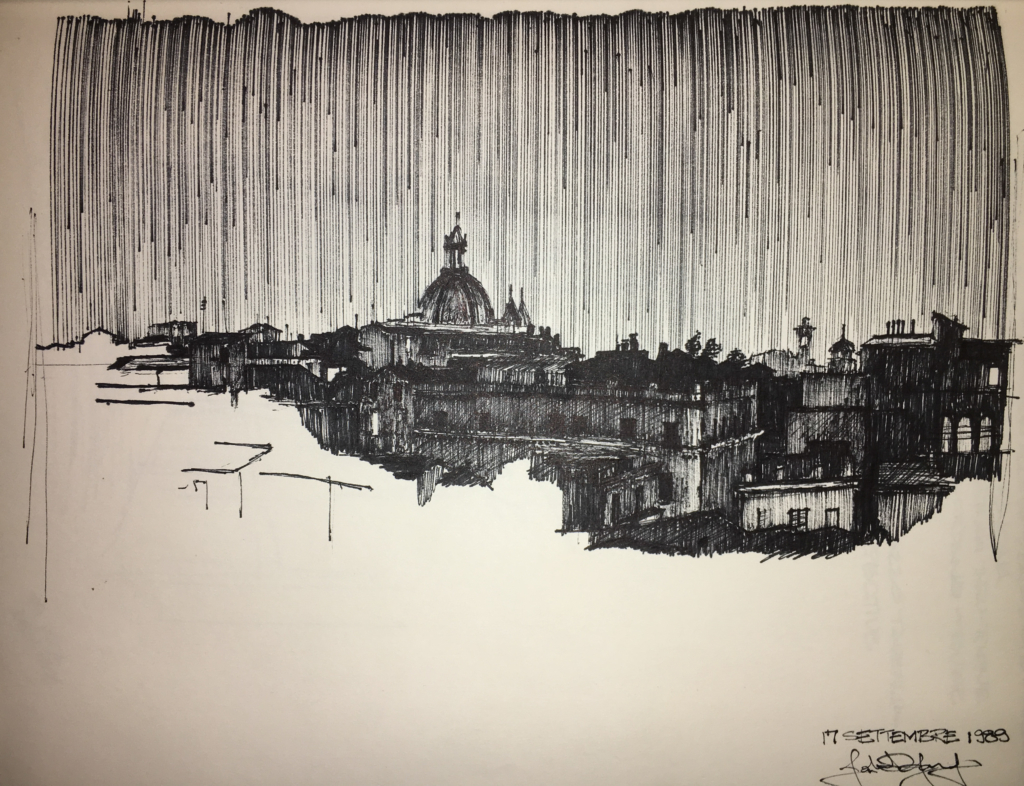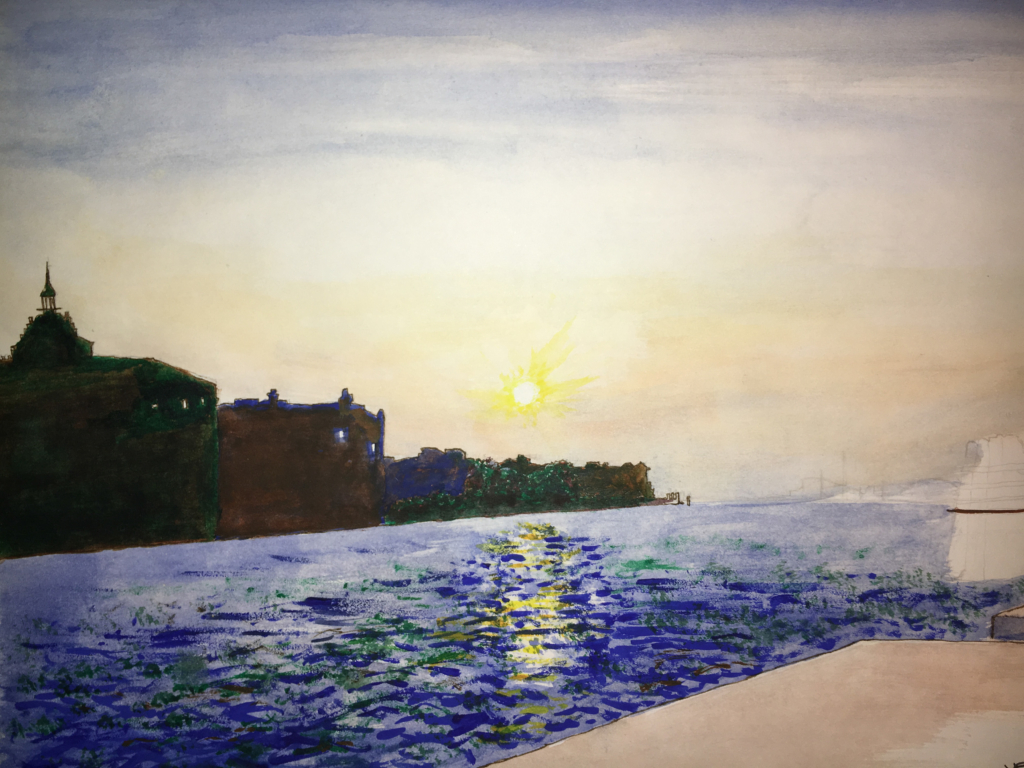When I was in Architecture School, I drew ALL THE TIME. I actually carried one of those black-bound sketchbooks everywhere I went. It was required. Period. If I saw something interesting, I had to draw it. A unique building, a sunset silhouetting the woods, a long shadow across the quad.
pssssst…. I’m about to let you in on a secret. A really good one, too. It changed my life forever. It’s like a superpower. Except I never really saved anyone’s life with it. But, it’s become part of who I am, and I can say I’ve dramatically improved my clients’ lives through the successful design of their homes and built environments. If you want, you can have this superpower too. But you have to promise to use it only for good…
You would think the purpose of all this required drawing was to teach us how to draw well. And in part, it was. But really, the most important thing that came out of ALL of that sketching, was a new special ability to SEE like never before. Essentially, in finding something that moves us, and taking the time to stop, study, and sketch it, we are asking ourselves, “what is it I’m sketching?”, “why I am drawing this?”, “what is special about this?”. “What do I see that I want to capture and communicate in this art-form?”
When an architecture student (or anyone) learns to “SEE”, it is almost like Neo discovering the Matrix. For instance, if you take a “lay-person” into the city, ask them to look up and describe what they see — “I see a building” is the likely answer. What else? “Well, it’s a tall building…Lots of windows.” Don’t expect much more than that. But the “enlightened seer” (and this could be an architect, photographer, artist, or anyone who studies “seeing”) may not even discuss the building as the primary object: “I see the church’s spire reflecting off this massive mirrored wall, with clouds slowly drifting by. I see that the windows are tinted differently every 10 stories, creating an interesting effect…” It’s no longer just a building, it’s a dynamic, living edifice that is completely modern in material and structure, but respects and reflects nature, the spiritual, and its older neighbors. It was DESIGNED; it has meaning. I mentioned in a recent blog that architects seek out meaning in everything – I suppose that comes in part from learning to see, and seeing there is purpose behind just about everything.
About 30 years later, I still sketch, but typically it is only at the conceptual level of designing a structure or planning out a site. Once that is done, it is much more efficient and accurate to develop the design with today’s design software (which was virtually non-existent then).
In 1989, I spent a semester studying architecture in Rome – the Eternal City. The city and it’s beautiful people captured my heart. Today, as I reorganized my office and went through some old boxes, I came across my Roman Studies Sketchbook. At the time, I carried my sketchbook everywhere, along with a small artists bag (think of a small camera bag with shoulder strap… wait, it was a camera bag!). This was equipped with technical pens (still my first choice for drawing), a compact water color kit, a 35mm film container filled with water, a fountain pen with sepia ink, some go-to prismacolor markers, and pencils. Here’s a glimpse back at some of the things I “saw” or the designs I pondered.
So, as I share this pictures for nostalgia’s sake, I leave you with this:
You can change your world this very second, just by SEEING differently. Look at EVERYTHING in your life a bit Deeper, with Appreciation and Gratitude, and you’ll SEE something special. Perhaps even worth sketching.

Detail – Bernini’s Fountain of 4 Rivers, Piazza Navona. Backstory: the figure is shielding his eyes in disgust from Borromini’s (a contemporary rival architect) church St. Agnes in Agony. (ink wash + marker)
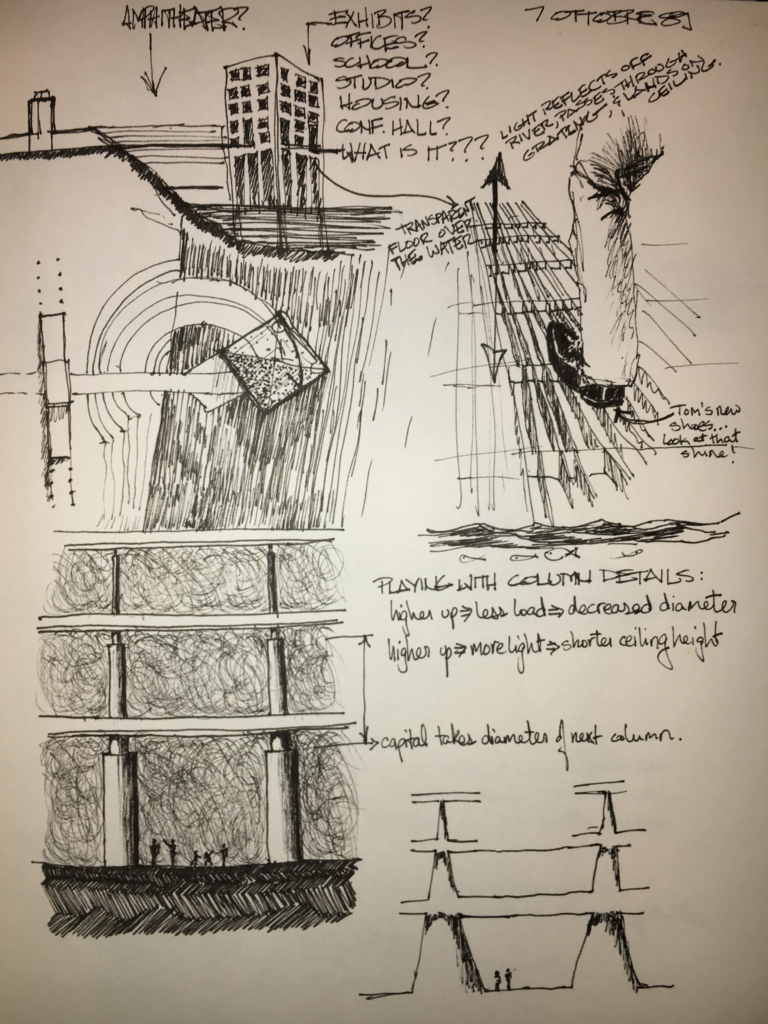
just sketching ideas. (poor Tom had those $400 new Italian leather shoes peed on by a drunk roommate one night).
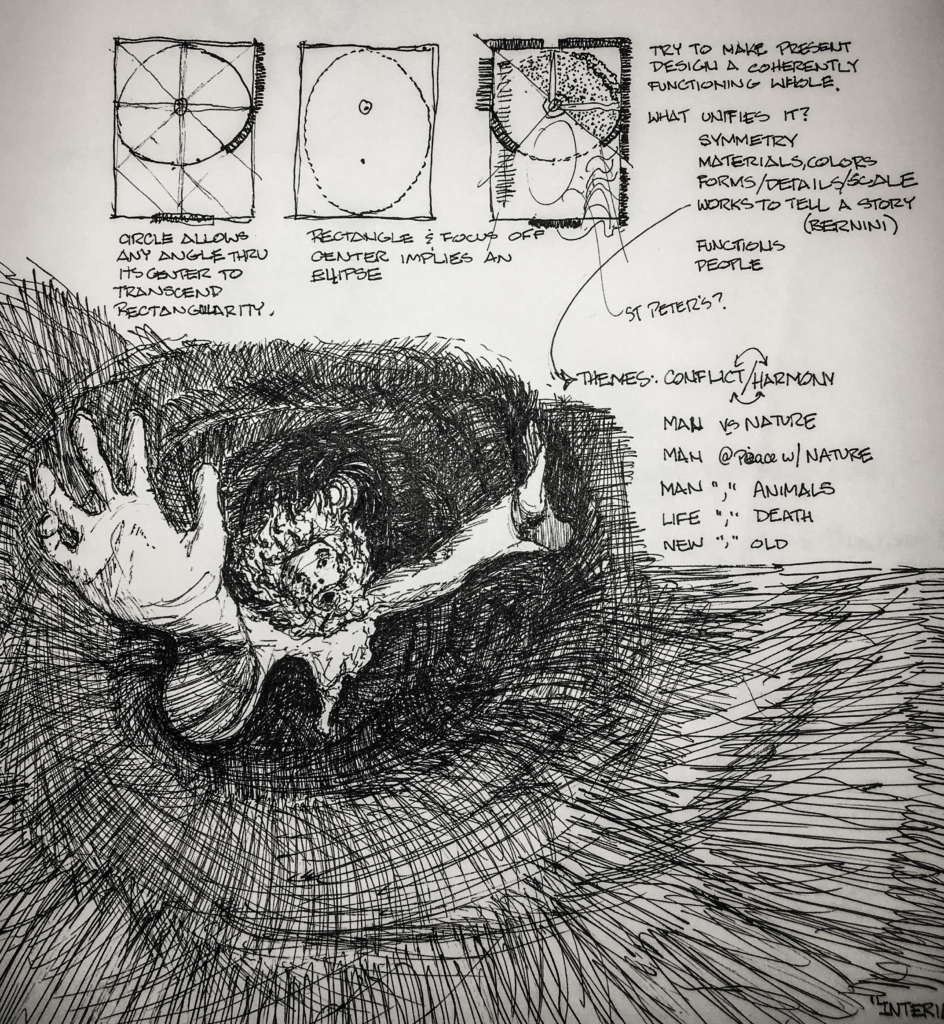
Self Portrait. Colin Rowe, a famous architectural historian/critic, Critiqued our Studio Projects in Rome. That’s me, falling deep into the abyss as he shredded every last one of our designs.

A quaint piazza in Rome. It was the space between the buildings, looking to the sky, that caught my eye. (ink and color pencil wash). And yes, I loved cross-hatching. There just doesn’t seem to be enough time to do that anymore.
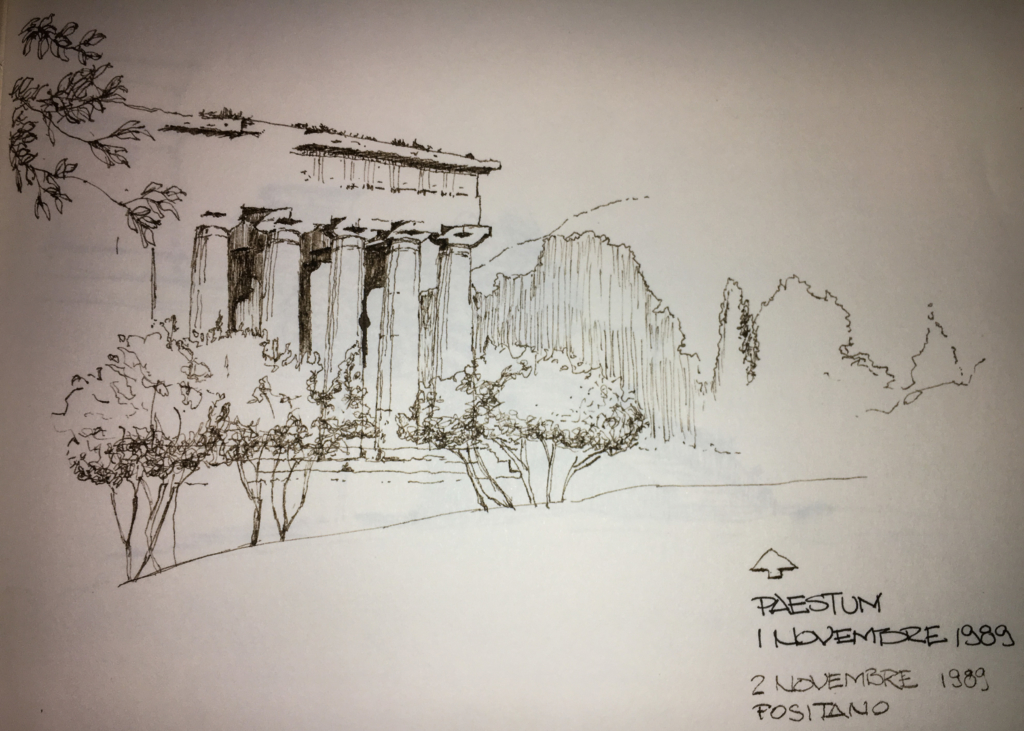
Ancient temple in Paestum. (sepia pen & ink) Note how all the details aren’t drawn. Sometimes getting “just enough” says more than showing it all.
That’s it for now. Now change your world by Seeing your world in a whole new way!


